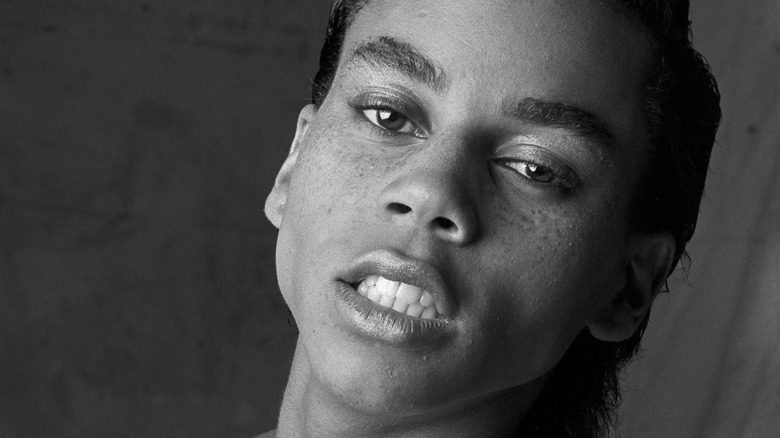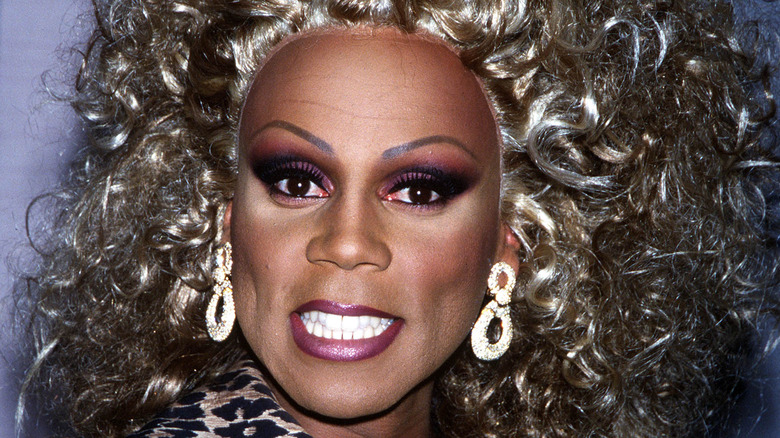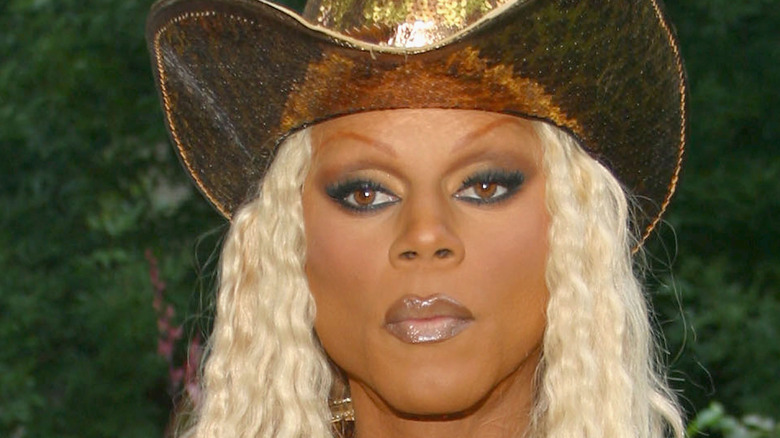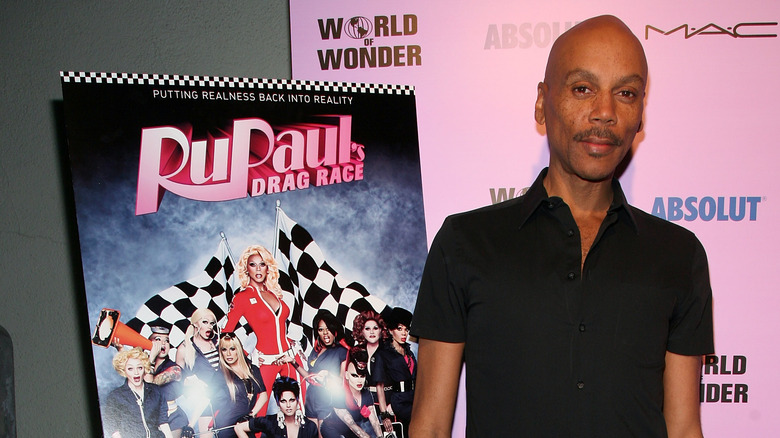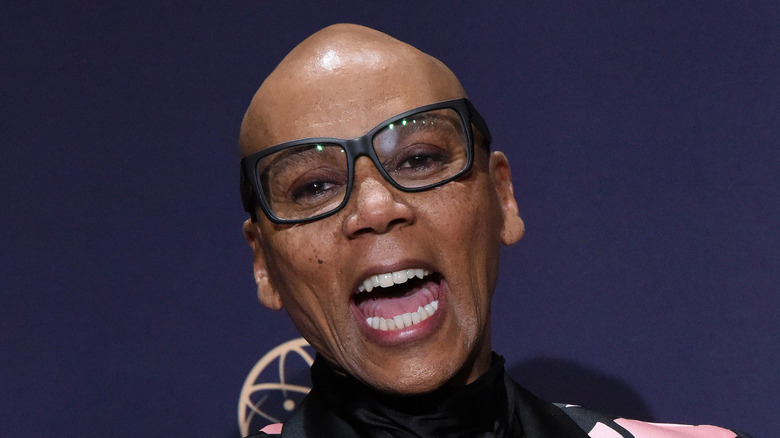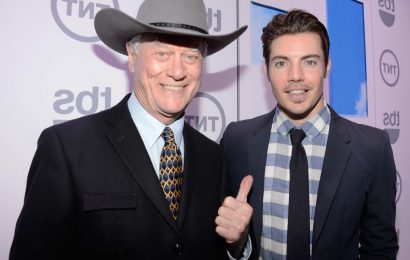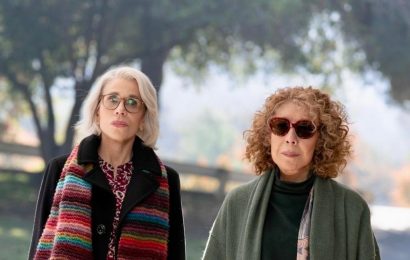Today, most people know probably know RuPaul Charles as the host, the star, and the “mother” of “RuPaul’s Drag Race,” the reality competition that single-handedly thrust what was once a fringe form of entertainment (drag) into the spotlight. Since “Drag Race” premiered in 2009, queens like Trixie Mattel, Aquaria, and Bianca Del Rio have gone from niche entertainers to full-fledged celebrities. And “Drag Race” remains one of the most popular shows on TV, with a massive 19 Emmy wins and 39 nominations, not to mention expanding its reach worldwide with internationally “sickening” spin-offs.
But today’s youth may not know that RuPaul has been challenging the public’s perception of gender since before many were even born. He first rose to national fame back in 1993 with the hit single “Supermodel (You Better Work)” and quickly began to take the world by storm, exposing many pockets of America to drag for the very first time.
The world has since evolved, and so too has RuPaul. In a certain lense, it’s evolved with his help. So don’t sashay away! Take a look at the megastar’s dramatic transformation from 18 to 60 years old.
RuPaul's roots are in the Atlanta punk scene
Back in the early ’80s, RuPaul (pictured above at 18) was living in Atlanta, Ga., not performing drag, but performing music. A young RuPaul fronted a punk rock band called Wee Wee Pole and performed in gay-friendly clubs like the Atlanta Eagle, Club 688, and The Nitery, according to Far Out Magazine. “I was inspired by bands like The B-52’s, Wendy O. Williams [of Plasmatics], and my all-time favorite, Blondie,” he said on a Season 8 episode of “RuPaul’s Drag Race” (via Afropunk).
RuPaul also became a regular on local public access television, particularly on “The American Music Show.” The show ran for 24 years and is considered a staple of Atlanta’s queer history, according to Slate. In his autobiography “Lettin’ It All Hang Out,” RuPaul recounts how he got involved with this legendary project. “It was the summer of ’81. I was wondering how my life was going to unfold, and how I was going to become a star,” he wrote (via Atlanta Studies). “The answer came when I stumbled upon this weird cable program called ‘The American Music Show.’ It was basically a variety show consisting of skits with a sick sense of humor performed by a kooky cast.” He continued, “When I saw those guys on public access, I thought, ‘That’s where I belong.'”
So he wrote the producers a letter and quickly became a fixture on the show!
RuPaul was a huge star by the '90s
In the early ’90s, RuPaul really began to take off. According to Britannica, RuPaul relocated to New York City in 1987. There, he became a regular in the nightlife scene, dancing at hip downtown clubs like Pyramid, Tunnel, and Limelight, per The New York Times. (Fun fact: it was at Limelight in 1994 that RuPaul met his husband Georges LeBar.) In a home video from 1988, RuPaul — after a long night of dancing — candidly discussed his life. “I’m trying to pay my rent, I’m trying to get a new apartment, and I let all these men touch me just because I wanted the money,” he said. “Isn’t that terrible?”
Luckily for RuPaul, those days were numbered. In 1989, he had a cameo in The B-52’s “Love Shack” music video. He told AV Club that he then put together a demo tape and shopped it around to record labels, leading to the release of his first studio album, “Supermodel of the World,” which contained the surprise hit single that really launched RuPaul’s career, “Supermodel (You Better Work).” “That was really the first time I felt like a star, like I had made it,” he told AV Club.
And by many measures, RuPaul had made it. He appeared on “The Arsenio Hall Show,” became the face of MAC cosmetics, and hosted his own popular talk show on VH1 with his longtime friend and current “Drag Race” judge Michelle Visage.
But in the 2000s, he took time to himself
RuPaul finished out the ’90s with a bang, appearing in movies like “To Wong Foo,” “The Brady Bunch Movie,” and “But I’m a Cheerleader,” according to Out Magazine. But as the 21st century began, RuPaul’s ubiquity began to dwindle. As it turns out, he consciously decided to keep a lower profile. He told Rolling Stone that George W. Bush and 9/11 created a more conservative, less accepting social climate. “Post-9/11, there was a hostile fear that had taken over the country,” he said. “When that happened, anything to do with gender or sexual exploration went way underground. So I decided I would step away from the canvas, so to speak, in terms of show business.”
Per Discogs, RuPaul put out four albums between 2000 and 2009. But after the release of “Red Hot” in 2004, he expressed dismay over the lack of press it received despite its popularity in the dance and club circuits. “It seemed I couldn’t get press on my album unless I was willing to play into the role that the mainstream press has assigned to gay people, which is as servants of straight ideals,” he told Wikinews. He continued, “The mainstream media and the gay press find it hard to accept me as … just … everything that I am.”
The first season of "Drag Race" came out in 2009
In 2009, the first season of “RuPaul’s Drag Race” premiered. “We thought, ‘Everyone is ready for drag — it’s mainstream now,'” RuPaul’s longtime collaborators and co-producers Randy Barbato and Fenton Bailey told The New York Times. “Distribution is part of the reason it hadn’t been realized as a cultural phenomenon.”
As cultural attitudes toward queerness became more positive, the show became increasingly popular. The low-budget first season, with its tiny runway and famously blurry camera filter, is completely unrecognizable from modern seasons, with A-list celebrity guests and a star-studded live finale. In 2017, the show moved from the niche LGBTQ+ channel Logo to the more mainstream VH1, exposing “Drag Race” to an even wider audience, according to Deadline. Since then, it has continued to take the world by storm … and move to Paramount+. Several outlets have called the show revolutionary, while a 2018 New York Times article asked, “Is ‘RuPaul’s Drag Race’ the most radical show on TV?”
The cultural impact of “Drag Race” is not lost on RuPaul. “I can only imagine what ‘RuPaul’s Drag Race’ is for kids in Perth, Australia, or in the outback somewhere, or in Africa,” he told AV Club. “We’re in so many different countries. I can’t imagine what it must be like for young kids today to see this show.” Well, now there’s a “Drag Race Down Under” spin-off, so no need to even imagine!
And the rest is 'herstory'
The “Drag Race” universe RuPaul launched is now a full-fledged empire. After 13 regular seasons and six seasons of “All-Stars,” the franchise continues to expand worldwide, with spin-offs in Canada, Spain, Thailand, the U.K., Australia, Holland, and Chile (via World of Wonder). RuPaul almost single-handedly brought queerness, or at the very least, a “gag-worthy” representation of queerness, into mainstream culture.
Thanks to the ubiquity of “Drag Race,” historically queer slang terms like “shade,” “tea,” and being “read for filth” are now part of the common vernacular. The show has also provided a wider platform for transgender entertainers, with queens like Gia Gunn, Peppermint, Jiggly Caliente, and Kylie Sonique Love — all transgender women — as well as Gottmik — the show’s first transgender man — having completed. Though it took a few years to get there.
The show’s famous lip sync smackdowns have inspired several heteronormative knockoffs, like John Krasinski’s “Lip Sync Battle” and the regular segment with Jimmy Fallon on “The Tonight Show.” But to RuPaul, imitation is not necessarily the highest form of flattery. “It’s a poor ripoff of our show,” he told Vulture. “Regular, straight pop culture has liberally lifted things from gay culture as long as I can remember.”
Nonetheless, RuPaul — along with the empire he built — has cemented his place in history. Or as the figure would say, “herstory!”
Source: Read Full Article
